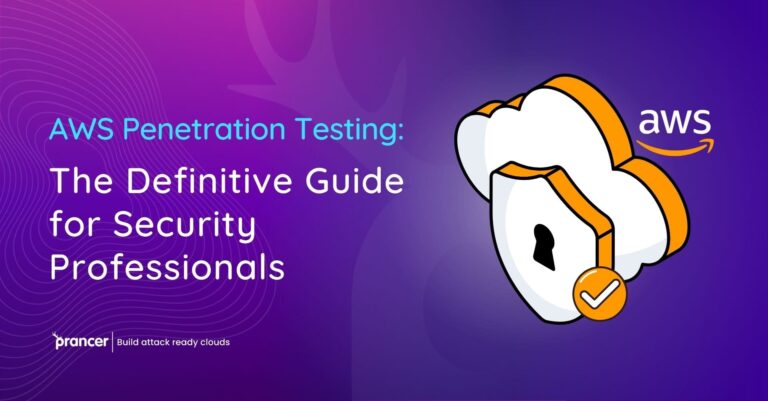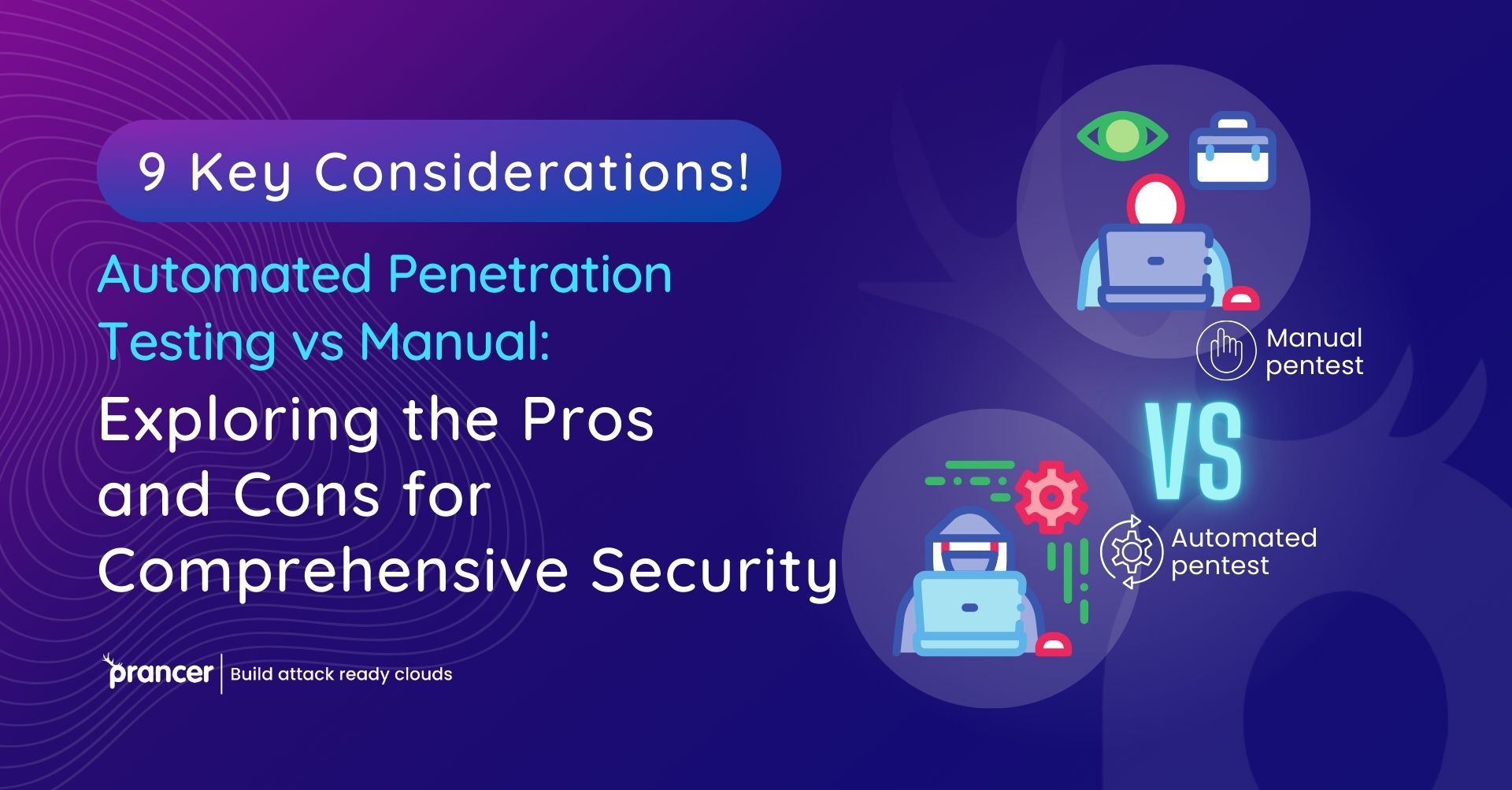

In the complicated world of keeping information safe from hackers, you need to change your plan as threats grow. Businesses have a big choice to make between “Automated penetration testing and Manual penetration testing.” This blog post will help you understand both methods better, and look at their good points and bad parts. It also shows how Prancer makes your computer protection stronger.
Picking Automated security testing over Manual tests is important. The automatic way promises quick and wide-range finding of weaknesses. Using modern technology, it copies real-life cyber attacks and gives results fast. This automation makes sure to complete tests, going beyond what humans can do and always ensuring safety.
Even though manual testing for security is based on the knowledge of skilled ethical hackers, it still has its weaknesses. Tests done by people can be hard work, expensive and sometimes give different answers because of differing views. Also, manual testing may sometimes fall behind in the continuously changing world of online threats.
In the world of cybersecurity, companies have a big decision to make. They can choose between automated and manual tests for security flaws. This post looks at these ways, showing their good points and bad ones. Automated testing gives speed and coverage, using fancy machines to copy cyberattacks. It quickly finds weaknesses in the system. This works better than hand testing. Even though it needs expert knowledge, manual tests can be hard work and not always the same every time.
Things to think about are how accurate automated testing is if it can grow with needs and save time. Also, consider the cost-effectiveness of using this form for checking all aspects quickly while giving fast replies in real life situations. Automated ways make sure we get good and trustworthy tests. They fit well with development cycles for continuous security checks.
Prancer makes automated security testing better with new tools. It’s great in complicated places like AWS. Its advanced tools and methods give a good understanding, making sure complete checks for safety. These help to make defenses better in the always changing world of using computers or phones online.
Automated Penetration Testing: Navigating the Cybersecurity Maze
In the modern era of cyberspace, businesses have a choice between Automated and Manual Penetration Testing in solving their day-to-day challenges. This extensive analysis aims at gaining more insight into both approaches, their advantages and limitations as well as the way Prancer transforms automated penetration testing.
Automated vs. Manual Penetration Testing
The decision between automated and manual testing is an important crossroads in the cybersecurity world. Every approach has its own pros and cons that organizations need to balance.
Automated Penetration Testing: Speed Meets Precision
What sets automated penetration testing apart is the frequency and completeness of vulnerability detection. Employing the latest technologies, it reenacts what real-life cyberattacks would be like and yields fast results. This method outperforms human capacity in terms of consistency and scope, which maintains security.
Limitations of Manual Penetration Testing
While manual testing is based upon the know-how of professional ethical hackers, it also has its own bottlenecks. It is sometimes burdensome, pricey and prone to human mistakes as well as different views. In addition, manual testing may not be able to match the constantly evolving nature of online threats.
Strategic Issues in Penetration Testing
Precision and Consistency: Automated testing is thus a human error reducer that improves reliability in vulnerabilities detection.
Scalability: Automated systems can manage complex networks effectively and keep the performance without unreasonable price rise.
Efficiency: Automated testing greatly reduces the time to results, thus allowing quick remediation of reported vulnerabilities.
Cost-Effectiveness: In spite of the initial investment, automated tools cut down on labor costs overtime and thus large amounts are saved.
Comprehensive Assessment: The process of automated testing covers various facets associated with the IT infrastructure to ensure no vulnerabilities are left untested.
Real-Time Feedback: Instantaneous automated reporting enables quick countermeasures to this vulnerability, thereby increasing the effectiveness of security.
Consistent Methodology: Reliable testing methods are used for automated tests while producing reliable results.
Seamless Integration: Automated systems could be included in continuous development cycles to allow for regular testing and quick reaction.
Prancer’s Novel Approach to Automated Penetration Testing
Prancer goes beyond the issue of an old debate between automatic or manual penetration testing from revolutionary solutions to automated tests. Its advanced platform uses modern technologies and approaches which provide concise, practical conclusions. Prancer is thriving in maneuvering through complicated online spaces, like AWS; conducting thorough inspection for maximum performance.
Automated vs. Manual Testing: A Comprehensive Comparison
In this part, the pros and cons of automated versus manual penetration testing are discussed as well and it is shown that with regard to speed, coverage level or accuracy there is no way they can match their performance against those provided by programmed tests. It highlights the need to account for factors like scalability, time benefit and cost effectiveness in selecting a testing approach.
Automated Testing in Cybersecurity
Among the most salient features of automated testing is its accuracy, flexibility and time efficiency in detecting vulnerabilities. It is vital for ensuring reliable, consistent assessments that integrate smoothly in development cycles to facilitate continuous security monitoring.
Prancer’s Improvement to Automated Security Testing
Prancer provides ground-breaking tools and approaches for effective implementations of automated security testing, especially in big environments such as AWS. Its sophisticated solutions give accurate, comprehensive assessments, strengthening defenses within the digital security environment that is constantly changing.
Navigating the Cybersecurity Labyrinth using Prancer
In the complicated cybersecurity environment where threats are constantly changing, it is essential to determine whether you need automated or manual penetration testing. This study has illuminated the advantages and pitfalls of each approach revealing how Prancer’s automated penetration testing advances are addressing current cyber security problems.
Prancer’s Role in Streamlining Cybersecurity
In its automated penetration testing, Prancer relies on modern tools and approaches. It provides comprehensive assessments effectively, especially in complex digital settings that allow organisations to strengthen their defenses.
To conclude, the choice between automated and manual penetration tests is crucial for companies in a society where cybersecurity poses numerous challenges. With its fast, accurate and scalable approach, automated testing provides an attractive solution. Prancer’s accomplishments in this field also demonstrate that the high-level automated penetration testing can benefit an organization with cyber resilience capabilities, which allows them to be ready for and successfully deal with modern digital challenges.
In the area of cyber security that keeps changing, it’s like art instead of science to decide between automatic testing and manual one. Though automatic tools promise to be quick and cover a wide area, the detailed knowledge of human experts is still very important. Prancer closes this distance, mixing machine accuracy with human smarts. If we mix the best of both, businesses can bravely deal with internet issues and make strong online borders.
